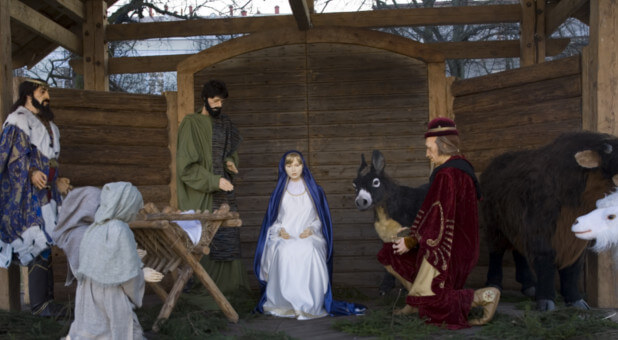Christ’s birthday. A widely held opinion is that Christ was not born on Dec. 25. Many believe we celebrate Christmas on the 25th because the third century church Christianized the day on which some pagan festivals were observed.
The truth is that Roman Emperor Aurelian passed an edict in A.D. 274 establishing the festival of Natalis Solis Invicti (“Birthday of the Unconquerable Sun”) while dedicating a temple. But such notable church fathers as Tertullian and Augustine were convinced that Christmas preceded this pagan holiday.
Alvin J. Schmidt, in his scholarly work Under the Influence, states that in northern Africa Christians were already celebrating the birth date of Jesus as Dec. 25 in A.D. 243, which was 30 years before Aurelian’s edict. If this is true, it wasn’t Christianity that Christianized a pagan festival but a pagan emperor attempting to paganize a Christian festival that predated it by 30 years.
Alfred Edersheim, one of the foremost scholars on ancient Jewish culture and sacred writings, disagrees with those who question Dec. 25 as the date of Christ’s birth. He states that “there is no adequate reason for questioning the historical accuracy of this date. The objections generally made rest on grounds, which seem to me, historically unfeasible.”
Shepherds with their flocks by night. Another popular argument against Christ’s being born in December asserts that shepherds would not have their flocks out past October. Therefore, there weren’t any shepherds out in December. Is this true?
Edersheim claims there were shepherds at a place called Migdal Eder, near Bethlehem, who were commissioned by the Jewish priests to keep temple flocks in a specific pastureland year-round. Their demanding duties prevented them from participating in religious observances.
Taking as his source the Mishnah, the book of Jewish oral traditions, Edersheim writes that specific passages “lead us to infer that these flocks lay out all the year-round.” The shepherds who watched them could not worship and learn about God at the temple, so God chose them to be the first ones to see His newborn Lamb.
Christmas trees. Trees are very important in Christian theology. The Bible begins with a tree (the tree of life in the Garden of Eden) and ends with a tree (the cross on which Jesus paid the price for our redemption).
Some have dismissed the display of Christmas trees as a pagan yuletide custom unfit for Christian usage. But evergreen trees are key in the biblical revelation of redemption and restoration.
According to the Bible, the first thing that happened as a consequence of sin was that the earth was cursed. Immediately thorns sprang up, and from that time forward, thorns, briars and thistles became the biblical symbols of accursedness and barrenness because of sin. Later on, the Lord chose pine trees as His symbol for redemption and restoration.
Not just any tree was chosen for such a purpose, but the evergreen tree family exclusively. In fact, evergreens are biblical metaphors for reversal: They symbolize divine reversal from a state of accursedness and judgment to a state of blessedness and restoration. God even identified Himself as a pine tree in Hosea 14:8.
Scriptures such as Isaiah 41:17-20, 55:10-13 and 60:13 name two to three species of evergreen trees as prophetic signs of God’s promise to reverse the curse over the land and usher in an age of blessing. The pine tree prefigured the cross (also referred to as a tree) as a symbol of redemption. Trees represent God’s “instead ofs” when speaking to a people under judgment.
“‘Instead of the thornbush will grow the pine tree, and instead of briers the myrtle will grow. This will be for the Lord’s renown, for an everlasting sign, which will not be destroyed’” (Is. 55:13, NIV).
Chrismons. A chrismon is a Christmas tree that has been purposely decorated with symbols that clearly point to the person and work of Christ and the biblical account of His incarnation. Pronounced KRIZ-mon, the word comes from the Latin word for monogram.
In effect, a chrismon serves as a word picture, telling the story of Christ’s birth with its decorations. Chrismons emerged in 1957 when Frances Kipps Spencer, the daughter of a Lutheran minister, decorated her Lutheran church’s Christmas tree with centuries-old monograms and Christograms that pointed to the person and work of Christ.
In many Christian homes today the same is being done. Believers are intentionally making their Christmas celebrations more Christ-centered by turning their Christmas trees into chrismons.
The Paradise Tree. The first Christmas tree tradition probably emerged as a result of an 11th century play. In early times, Christian leaders taught illiterate converts the Bible by using drama and skits.
















































